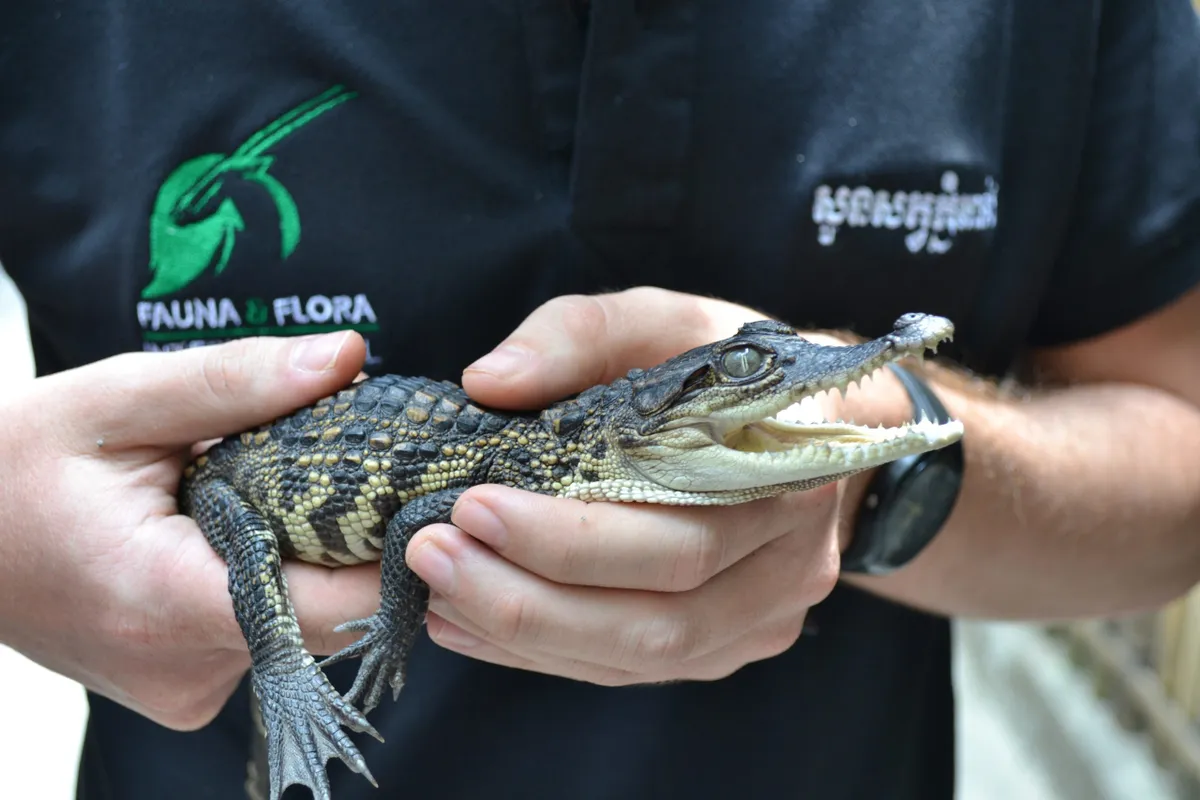Ten baby Siamese crocodiles have been seen in the wild, a breakthrough for this species that was once thought to be extinct in the wild.
Conservationists from Fauna & Flora International (FFI) spotted the hatchlings in late January in Veal Veng crocodile sanctuary, a protected area in Cambodia managed by FFI.
Listed as Critically Endangered on the IUCN Red List, this is the second time in a decade that baby siamese crocodiles have been seen in the wild. It is estimated that only 250 Siamese crocodiles can be found in the rivers of Cambodia.
“For a species that for a long time was believed to be extinct in the wild to be breeding and producing hatchlings is extremely exciting,” says Pablo Sinovas, flagship species manger for FFI.
“Reproduction of a species in the wild is a key measure of success in terms of population recovery and long-term viability. It shows our conservation efforts are working.”
Previously threatened after being taken from the wild and put in farms, the reptiles are now endangered by habitat degradation, as an influx of people in the area claiming land has caused pressure on the wetland habitat and reptiles. They are also caught in fishing nets, where they often die.
Until their rediscovery in 2000 by Cambridge scientists, in the Cardamom Mountains in south-west Cambodia, Siamese crocodiles had disappeared from 99% of their original range and thought to be extinct in the wild.

Captive breeding facilities outside of Phnom Penh are managed by the FFI and partnered with the Cambodian Forestry Administration. Here baby crocodiles are nurtured until they are 3 years old. At which point they are able to fend for themselves and released into strictly protected community crocodile sanctuaries.
Conservation efforts by the FFI have achieved the release of 111 Siamese crocodiles since 2012.
Collaborations with the Royal University of Phnom Penh with technical support from FFI and the Royal Zoological Society of Scotland made a break through in January by completing the first DNA testing of Siamese crocodiles in Cambodia.
The importance of DNA testings ensures released Siamese crocodiles are purebred and not Siamese saltwater hybrids.
“If hybrids get into the wild it could contribute to the dilution of the genetic makeup of this species which has been around for millions of years,” says Sinovas.
Plans for the next stage include increasing the number of released crocodiles into the wild and increased monitoring of them to grasps a better understanding of their behave after release.